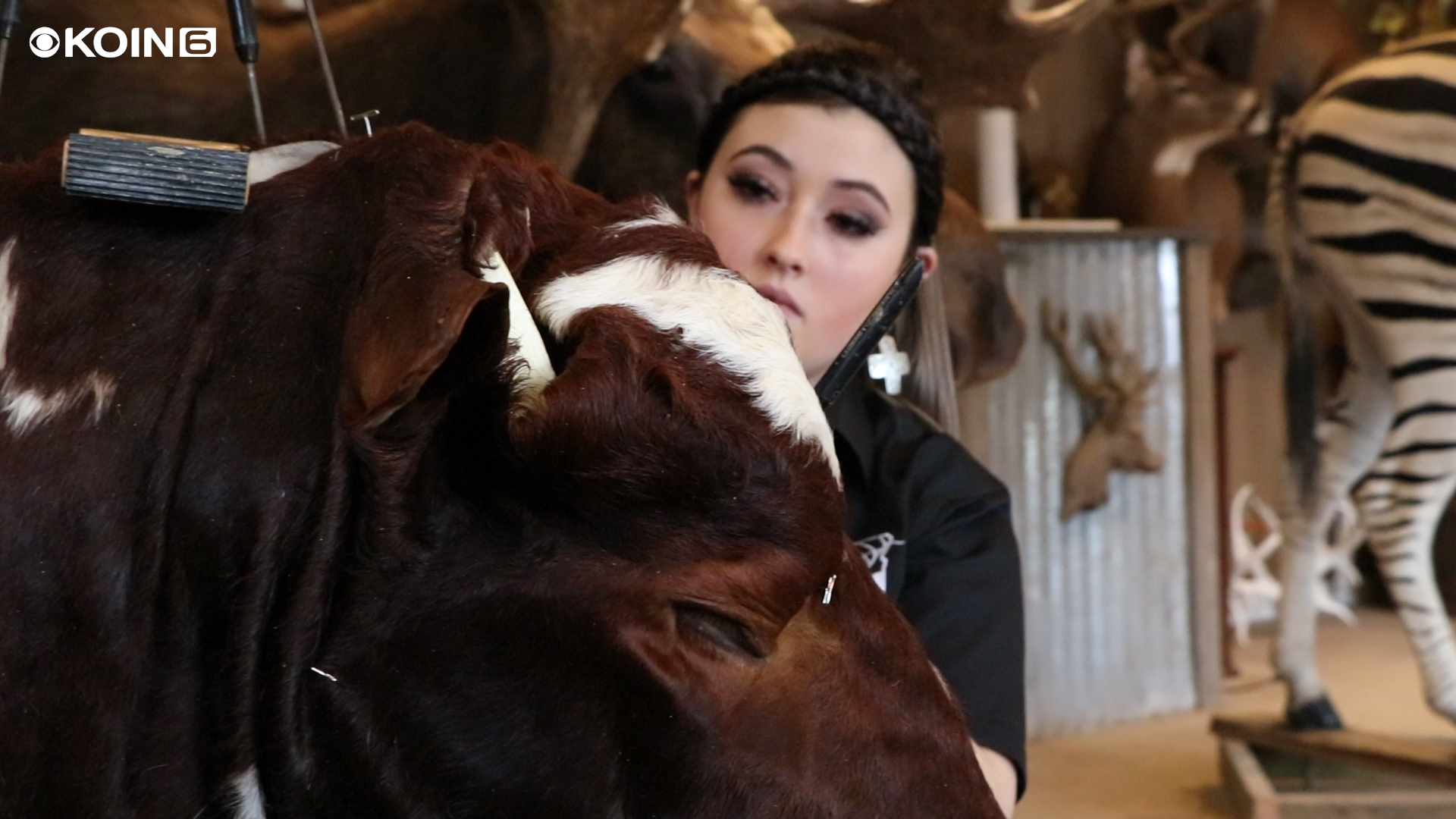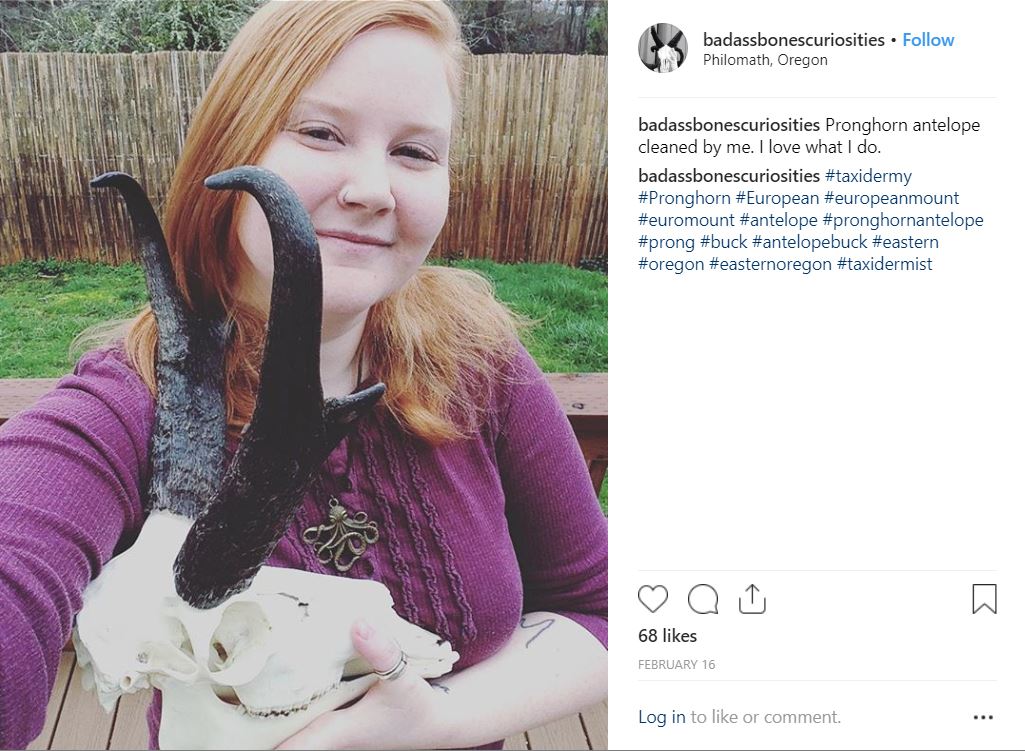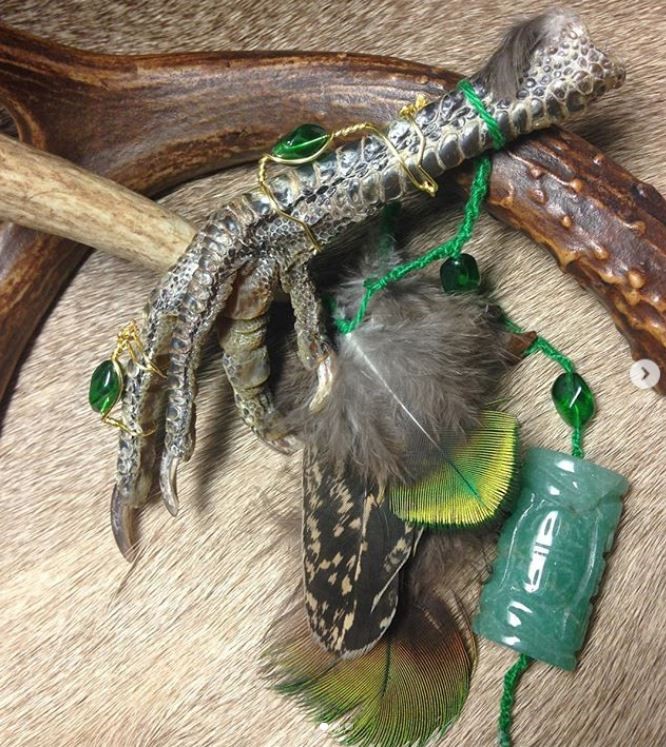PORTLAND, Ore. (KOIN) — A new generation of artists is changing the face of taxidermy, a profession that’s long been considered old, stuffy, or even creepy.
Kiernan Hull, who owns Oregon Taxidermy LLC in Newberg, got started when she was 17.
“I had no idea what I wanted to do for a career,” Hull said. “One day I walked in a taxidermy shop and called my mom and said ‘I’m gonna be a taxidermist.’ She’s like, ‘You’re crazy but I could see you doing that.’”
Within the month, Hull moved to Montana, started taxidermy school, and never looked back.
That was about 7 years ago and, back then, she was a member of an exclusive club: Women in taxidermy.
According to the Oregon Department of Fish and Wildlife, there were 209 licensed taxidermists in the state in 2018. While ODFW does not track the gender of license holders, a simple Google search for “Oregon taxidermists” will turn up many more Tims, Jims and Daves than Kiernans (though Hull’s website does make the first page of results).
The Oregon Association of Taxidermists estimates that, at most, only six women own their own shop in Oregon.
Hull is one of those women. If there’s an image that comes to mind when you think “taxidermist,” she probably doesn’t fit it. She’s young, charismatic, and a former rodeo princess.
“I know I get pretty hardcore judged by a lot of people just thinking that it’s a gross, creepy job,” she said. “Especially people who aren’t involved in hunting or the outdoors kind of see it as really weird that I’m not an old man in my basement.”

According to Hull, taxidermy takes a lot of artistic talent. “It’s sitting there and getting the pupils on glass eyes to be perfect and claying all of the detail into it and making sure the veins are correct and the anatomy’s correct.”
Hull has done some work for museums and stores, but hunters are her usual customers.
“Every year I see pretty much the same people (after hunting season) so that’s nice and I kinda feel like they’re more friends at this point.”
She spends long days breathing life back into the skins of all sorts of birds and mammals, usually from 8 a.m. to 11 p.m. But as her own boss, she gets to set her own schedule. So the long hours in the studio reveal a lot about how much she loves her job. It’s the variety that keeps her engaged.
“There is no typical day. I could be skinning ducks, mounting zebras, working on antlers or rugs or mounting birds, it’s just, there’s no typical day,” Hull said.
And now, the once exclusive club of female taxidermists is growing.
“Seven years ago when I went to my first show I think I was the only female that was there. And now I just went to the California show here a couple months ago and there were a lot of women there,” Hull said. “That was awesome to see.”
Mark McLain, a longtime taxidermist near Lebanon, said “the women that are doing taxidermy are getting noticed more than they did from years past.” He credits that, at least partially, to the Internet giving them a platform to “show off what they have created.”
Erica Heath, a taxidermist in Philomath, also suspects the Internet has helped more women get into the business.
“Not surprisingly, with the advent of the Internet and social networking, the taxidermy and oddities community has grown immensely especially among women,” Heath told KOIN 6.

At 25 years old, she said she has been collecting and cleaning bones for as long as she can remember. “I’ve always had the exposure to animals, and to finding roadkill and finding bones in the woods and things. So I’ve always had, you know, a collection of skulls.”
When she was a teenager, Heath said her neighbor’s dogs chased a young deer and it got caught in a fence. The police were called out to put it down, then left the body behind. “I just had to go look at it and then suddenly felt saddened by all of this wasted meat and its gorgeous pelt, soon to be rotting in a landfill. I took it upon myself to Google how to tan hides and went to work on the little buck.”
She used a more traditional method of using the animal’s brain to tan the hide, but it didn’t work very well. She now uses citric acid or chrome. But an affinity for “preserving life after death” and making use of materials that would otherwise go to waste was born out of that first tanning experience.
Now, Heath has numerous clients, primarily for cleaned skulls. She also uses scavenged animal parts to create art, jewelry, Pagan and Wiccan ritual tools, and basically anything else you can think of, then sells the finished products online and at fairs under the name Badass Bones Taxidermy and Curiosities.

She has been pleasantly surprised by the amount of positive feedback she’s gotten.
“Most of my clients … are midlife men who hunt and fish and are excited to see tough girls taking over!”
And according to Heath, children are especially excited to learn about preserving animals.
“They’re at your table, they want to touch everything, and they’re full of questions and I just love that,” she said. “It naturally doesn’t creep them out or scare them. They have no stigma against it or anything yet so I think it’s really fun to be able to encourage kids to get closer to wildlife through being able to touch and handle furs and bones and things.”
According to her, the only times she gets negative or nasty attacks is on the Internet.
“That’s where you find the folks from other lifestyles who would rather attack you than learn from you,” Heath said.
Fast facts
- Taxidermy literally translates to “movement of skin.”
- According to Heath, the industry has evolved to no longer employ the regular use of dangerous chemicals like formaldehyde, arsenic, asbestos, lead, etc.
- While taxidermists can do the entire process from start to finish, removing the animal’s skin and tanning it, others outsource that part to specialized tanneries. They’ll have their clients animal shipped to the tanner, then get the skin back and get to work reassembling it.
- While mounts used to be stuffed with wood, wool, or wire, now many taxidermists (including Hull) use foam mannequins. It makes it easier, but if the client wants a custom pose — say, a cougar lunging for the kill — the taxidermist has to chop up the mannequin and reassemble it in the desired position.
- Some people use flesh-eating beetles to clean skulls and other bones. Heath, however, uses a process called cold water maceration where you basically put a skull in a bucket of water to rot, changing out the water every so often until it runs clear. Dish soap is used to degrease the bones, and hydrogen peroxide whitens it.